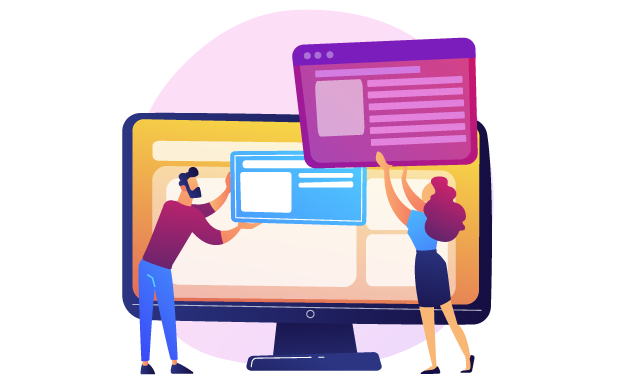#1 Prototyping and MVP development company In India- Top notch MVP development services
What is Prototyping?
Prototyping is an experimental process where design teams implement ideas into tangible forms from paper to digital. Teams build prototypes of varying degrees of fidelity to capture design concepts and test on users. With prototypes, you can refine and validate your designs so your brand can release the right products. It’s an essential part of user experience (UX) design that usually comes after ideation, where you/your team have created and selected ideas that can solve users’ needs. In prototyping, you craft a simple experimental model of your proposed product so you can check how well it matches what users want through the feedback they give.

A little more about Prototyping
Create a strong foundation: A prototype provides a clear picture of the potential benefits, and associated risks of developing an application. Further ideation and improvements become easy when we have a strong starting point. Adapt changes early on: Sharing the prototype with your customers and/or management can provide valuable feedback to help pinpoint which elements work best and which elements require further improvements. Delve deeper into user challenges: the prototype provides us with a tool to experiment with associated parts of the users’ needs and problems. Through a prototype one can get ideas into less-obvious areas of the users’ world. It also provides a sense of ownership to all concerned therefore fostering emotional investment in the product’s ultimate success. Improve time to market: By minimizing the number of errors before a product release, one can improve the overall time to market the application.
What is MVP Development?
Minimum Viable Product(MVP) is what can be described as a version of the product that contains the basic required set of features. A minimum viable product (MVP) is a development technique in which a new product or website is developed with sufficient features to satisfy early adopters. The final, complete set of features is only designed and developed after considering feedback from the product’s initial users. Will it have all the good features you want your users to have? No, but it will have what you really need to get to market faster. Is this the final product and how it’s going to look to all my users? No, this is the very beginning of your incredible product journey. An MVP is the best way to start any project because it allows for an agile development process. This means that your product gets to users fast, who then will provide important feedback that will then help your product become even better in the next development cycle.
What we do offer in our MVP development services?
Traversia is a prototyping and MVP development company based out of Delhi, India. Our highly experienced team of business analysts, development professionals and creative designers work closely with clients to develop a clearly defined proposition and then formulate a concise strategy best suited for their brand.
How we do?
MVP can be best described as a mid-point between the earlier stages of the development process and the final product. In a way, it’s one of the most important stages of the entire development process. From here you will test your product in markets and with your target audiences and have the ability to pivot if needed. We all want our custom development projects finished faster and under budget. A MVP allows you to do that by stripping away all of the extra features that haven’t been tested with users and that could be built during the next version. This provides faster turnaround time and allows your team to get a product that you can then flesh out.
MVP development company process
- Conceptualize the idea
- Define MVP requirements.
- Determine MVP tech stack and architecture
- Advice on disruptive techs (AI, machine learning, big data, AR/VR, etc.).
- Help comply with GDPR, and your industry standards and regulations like HIPAA, PCI DSS, FIPS, and COPPA.
- Deliver a detailed MVP implementation roadmap
- End-to-end MVP development
- Product/enterprise application idea conceptualization and feature management.
- MVP UX and UI design.
- MVP development and testing.
- Integrations with third-party systems.
- MVP launch and support.
- MVP performance evaluation and further iterations.

Prototyping Model has following six SDLC phases as follow:
- Step 1: Requirements gathering and analysis. A prototyping model starts with requirement analysis. ...
- Step 2: Quick design
- Step 3: Build a Prototype
- Step 4: Initial user evaluation
- Step 5: Refining prototype
- Step 6: Implement Product and Maintain





 Digital Marketing
Digital Marketing Website Development
Website Development Mobile App Development
Mobile App Development Prototyping and MVP Development
Prototyping and MVP Development Ecommerce Development
Ecommerce Development